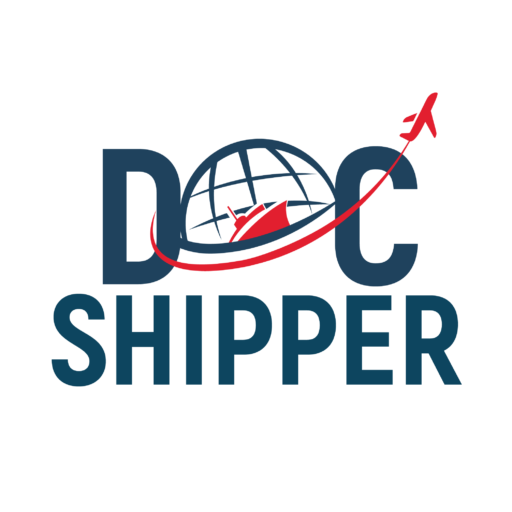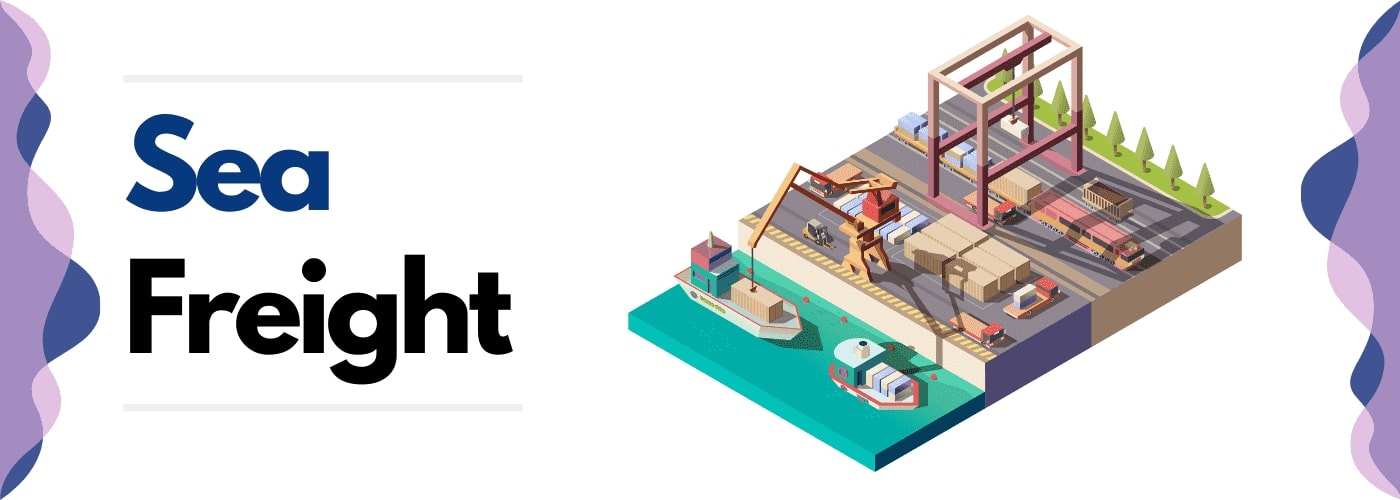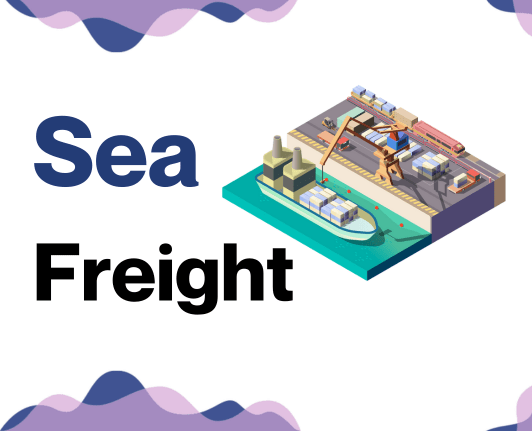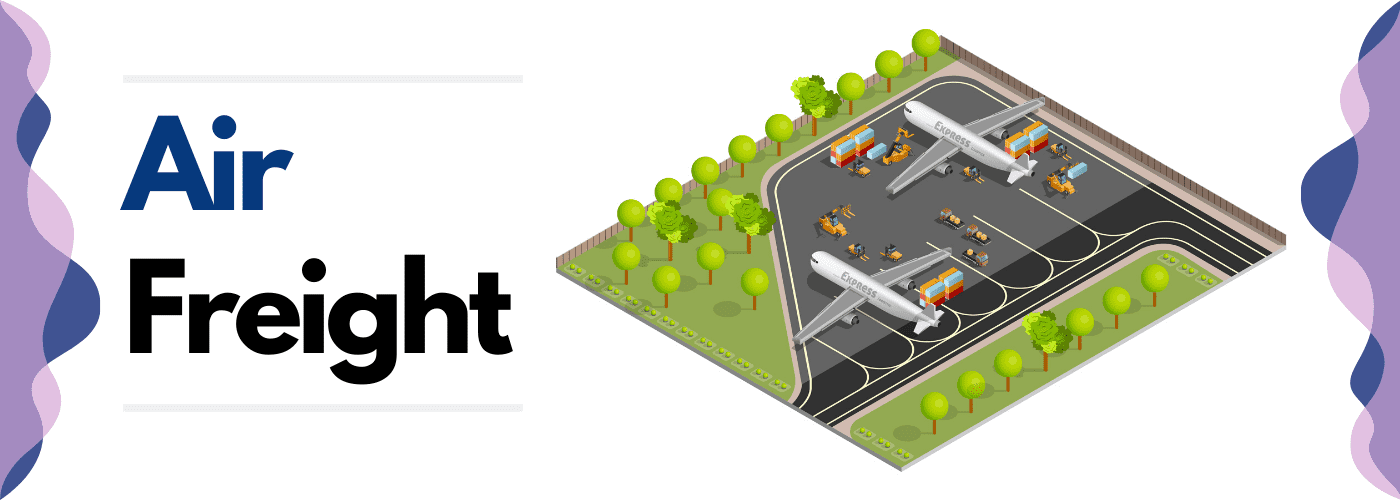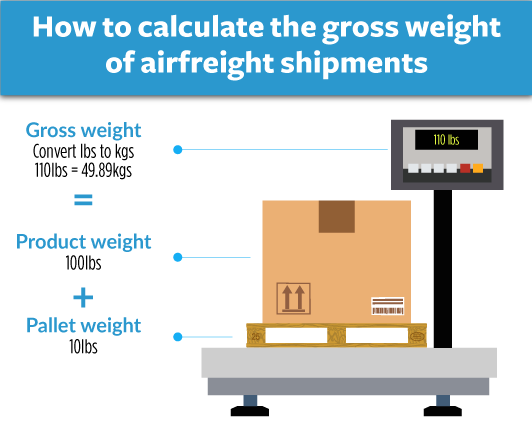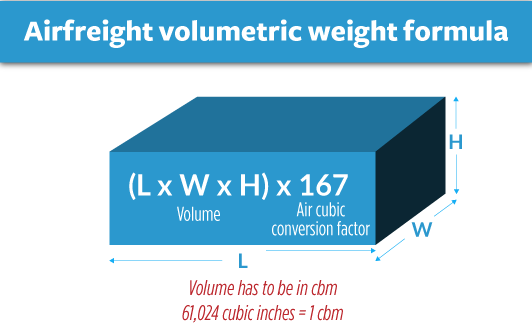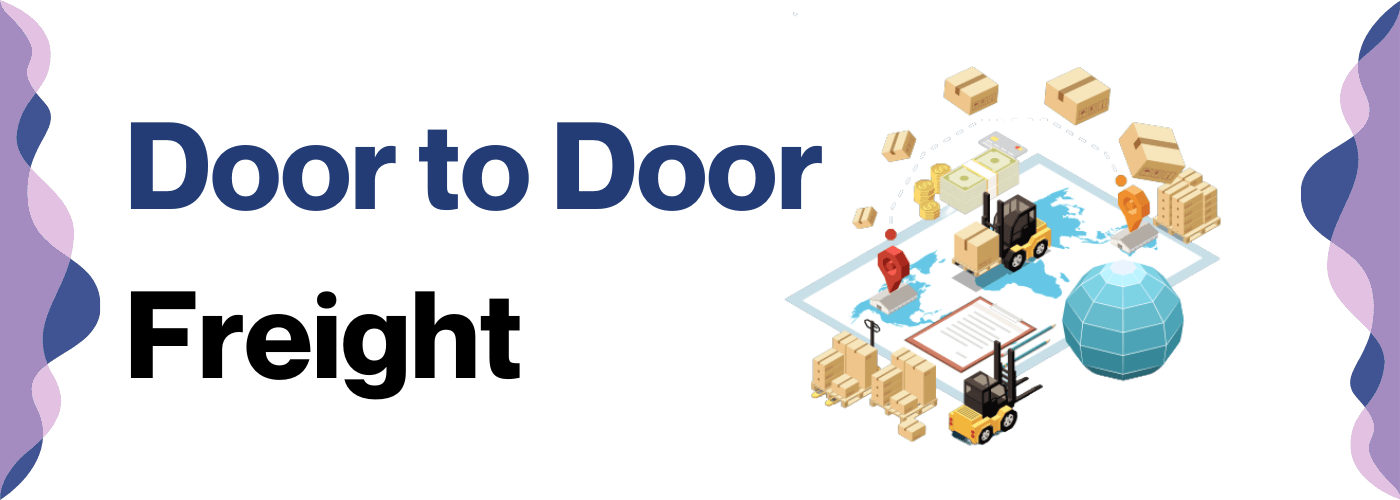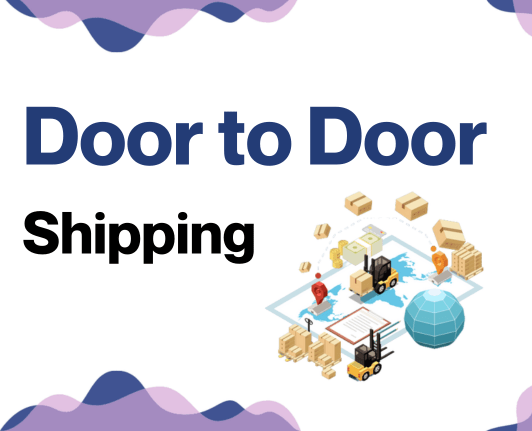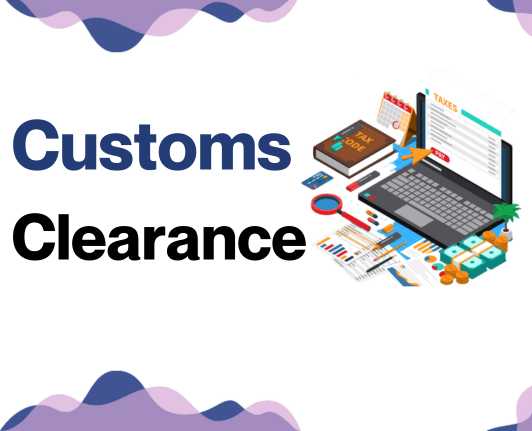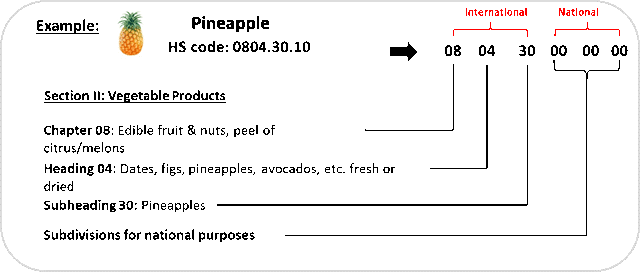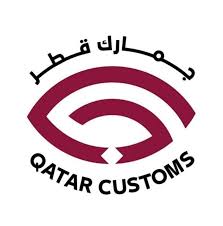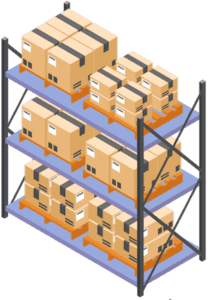Ever tried to ride a camel from Qatar to Canada with a shipment of goods? It might take a little longer than you'd expect! Jokes aside, shipping goods between these two countries can present its own set of hurdles, including understanding rates, transit times, and customs regulations. But don't fret, as this guide promises to shed light on all of key aspects of the shipping process. From unraveling the intricacies of different freight options - be it by air, sea, road or rail - to demystifying the complexities of customs clearance, duties and taxes, this guide aims to equip businesses with a thorough understanding of freight transport from Qatar to Canada. If the process still feels overwhelming, let DocShipper handle it for you! We transform logistical challenges into opportunities, ensuring your shipping process is a smooth and successful journey.
Table of Contents
Which are the different modes of transportation between Qatar and Canada?
Stretching over 11,000 kilometers, the journey from sun-drenched Qatar to wintry Canada brings unique challenges! The mass of land and ocean that stands in the way rules out road and rail transport. So, it's akin to choosing between a swift falcon or a sturdy camel to deliver your message. Urgent, lightweight cargo? Air freight, the 'falcon', races ahead with speedy delivery. But for heavy, bulky goods that could wait, sea freight, the 'camel', plods on economically. It's all about aligning your choice of transport with the demands of your shipment!
How can DocShipper help?
Looking to ship goods from Qatar to Canada or vice versa? Trust DocShipper. We handle everything from transport organization to customs clearance. Our quick, reliable services alleviate your shipping concerns. Need assistance or a free quote in less than 24 hours? Reach out to our consultants. They're just a call away, and it's totally free!
DocShipper Tip: Sea freight might be the best solution for you if:
- You're dealing with hefty quantities or large-scale goods. Sea freight is your go-to for maximizing space without stretching your budget.
- Your cargo doesn't have an urgent deadline, as sea freight typically has longer transit times compared to air or rail.
- Your shipping routes are between major ports, allowing you to leverage the extensive global network of sea shipping lanes.
Sea freight between Qatar and Canada
Bridging the gap between the energy-rich lands of Qatar and industry-laden Canada, ocean shipping carves a significant lap of this global trade relay race. As the baton is passed between major ports like Hamad in Qatar and Vancouver or Halifax in Canada, small hurdles can turn into painstaking obstacles. Deciphering a pile of customs documents, complying with strict regulations, dealing with unforeseen shipping delays – it can feel like navigating a sea during a storm. But let's shift our perspective and imagine sea freight as a symphony where many different elements harmoniously kidnap the monotony of silence. When composed with precision and skill, it can invigorate the most stagnant business landscape. So, let’s conduct this symphony. We're here to help demystify the sea shipping process between Qatar and Canada, exploring those best practices that can help you avoid common pitfalls and orchestrate your high-volume goods shipping with finesse. Together, let's transform the tumultuous tides into a smooth sail.
Main shipping ports in Qatar
Port of Hamad
Location and Volume: Situated in the Umm Al-Houl region, the Port of Hamad is Qatar’s primary seaport, managing a shipping volume of more than 3 million TEU annually.
Key Trading Partners and Strategic Importance: As a leading port in the Middle East, its principal trading partners include countries such as China, India, and the United Arab Emirates. Its strategic position allows it to act as a significant gateway for trade and a hub for import and export activities, contributing substantially to the Qatari economy.
Context for Businesses: If you are considering broadening your reach in the Middle East or tapping into lucrative markets such as China and India, the Port of Hamad could play a vital role in your logistics and supply chain strategy due to its vast capacity and sophisticated infrastructure.
Port of Doha
Location and Volume: The Port of Doha is located in the heart of the capital city and is the oldest commercial port in Qatar. Although it's smaller than the Port of Hamad, it still enjoys substantial traffic with a significant volume of shipping.
Key Trading Partners and Strategic Importance: Its advantageous location near the central business district has made it a critical junction for commercial and passenger vessels. Major trading partners include neighboring Gulf countries.
Context for Businesses: If your business targets the domestic market or you're planning to cater to Gulf countries, you can consider the Port of Doha for its proximity to the city centre and ease of access to local businesses and markets.
Port of Al Ruwais
Location and Volume: Located in the far north of Qatar, the Port of Al Ruwais mainly serves the needs of the local population, offering services to traditional fishing boats and passenger ferries.
Key Trading Partners and Strategic Importance: It connects with the small towns of the North and serves as an essential link between Qatar and neighboring countries including Bahrain, through passenger ferries.
Context for Businesses: If your logistics needs include passenger movement or fishing activities in the northern region of Qatar, the Port of Al Ruwais is a relevant option to consider given its niche services. Also, for small scale businesses, it provides a conducive environment for trade given its connectivity with neighboring countries via ferry.
Main shipping ports in Canada
Port of Vancouver
Location and Volume: Situated in the heart of Vancouver, British Columbia, this port ranks as Canada's largest. It handles over 140 million tonnes of cargo annually.
Key Trading Partners and Strategic Importance: The port's trade reaches about 170 economies globally, with key trading partners including China, Japan, and South Korea. It plays a pivotal role in Canada's Pacific Gateway Strategy.
Context for Businesses: If you're looking to penetrate the Asian markets, the Port of Vancouver's strategic location and extensive network make it a preferred choice for your shipping needs.
Port of Montreal
Location and Volume: Located in Montreal, Quebec, it's the second largest port in Canada with a shipping volume of over 1.7 million TEUs annually.
Key Trading Partners and Strategic Importance: The Port of Montreal primarily serves European markets, being strategically located to offer the shortest direct route from Europe to the Midwest North America.
Context for Businesses: If you aim to establish or strengthen your supply chain between Europe and North America, especially the Midwest, the Montreal Port definitely deserves consideration.
Port of Halifa
Location and Volume: Located in Halifax, Nova Scotia, this port handles around 545,000 TEUs per year, making it the fourth largest by volume in Canada.
Key Trading Partners and Strategic Importance: The port's key trading partner is Asia, followed by Europe and the Middle East. It's particularly valued for being the only port on the east coast of North America, capable of handling large cargo vessels.
Context for Businesses: If your primary trading partners are based in Asia, the Port of Halifax may be an asset for your East Coast operations, particularly due to its ability to handle large vessels.
Port of Prince Rupert
Location and Volume: Situated in Prince Rupert, British Columbia, this port's annual shipping volume stands at approximately 1.2 million TEUs.
Key Trading Partners and Strategic Importance: The port's trading network expands across the Asia-Pacific region. It is recognized for its strategic location, providing the shortest sea route to Asia.
Context for Businesses: The Port of Prince Rupert is an optimal choice if you're looking to efficiently transit goods to or from the Asia-Pacific region, being well-situated on the western coast of Canada.
Port of Saint John
Location and Volume: Located in Saint John, New Brunswick, it's the largest port by volume in Eastern Canada, handling more than 31 million tonnes of cargo annually.
Key Trading Partners and Strategic Importance: The port has a diverse trading portfolio, with key partners including Europe, Central and South America. It's notable for handling different types of cargo, from dry bulk to containers and liquids.
Context for Businesses: Businesses seeking flexibility in cargo types, especially if trading with Europe, Central or South America, will find the Port of Saint John an attractive hub for their logistic requirements.
Port of Quebec
Location and Volume: The port, situated in Quebec City, Quebec, has an extensive history in shipping products like mineral fuels, oil and wood. It handles about 27 million tonnes of cargo annually.
Key Trading Partners and Strategic Importance: Key trading partners include Europe, the US, and Asia. Its strategic importance is marked by being the furthest inland deep-water port in North America.
Context for Businesses: If your business involves shipping commodities like fuel, oil, or wood, the Port of Quebec can be an essential node on your shipping map, especially considering its deep-water facilities and strong connections to key markets.
Should I choose FCL or LCL when shipping between Qatar and Canada?
Choosing between consolidation shipping (LCL) and a full container load (FCL) when moving goods from Qatar to Canada isn't just a toss-up. Your selection can significantly influence the cost, delivery speed, and ultimate success of your shipment. Beginning to understand the unique benefits and trade-offs of both methods can help you make a strategic decision that matches your specific shipping needs. Let's set sail on the exploration of these two crucial sea freight options!
LCL: Less than Container Load
Definition:
LCL, or Less than Container Load, refers to freight that doesn’t occupy the full space of a standard container, typically utilized when shipping smaller quantities.
When to Use:
Choosing LCL is generally advantageous for shipments with a volume of less than 13/14/15 cubic meters. It offers greater flexibility, as you only need to pay for the space that your cargo occupies, making it a cost-effective solution for smaller shipments.
Example:
Consider a furniture manufacturer in Qatar aiming to send a small batch of custom-made pieces to a client in Canada. The shipment measures around 10 cubic meters, making it impractical and expensive to use a full container. In this case, LCL shipping accommodates the volume perfectly, enabling the merchant to share container space with other shippers while significantly reducing costs.
Cost Implications:
LCL freight typically incurs lower costs than an equivalent FCL (Full-Container-Load) for shipments under the aforementioned volume. However, bear in mind that LCL freight costs are calculated based on the volume, rather than the container's weight. Be sure to account for destination charges like LCL fees, customs brokerage, and delivery at the destination.
FCL: Full Container Load
Definition: FCL (Full Container Load) shipping is the process where you exclusively hire a full container, either a 20'ft or 40'ft, for your cargo. It's a great option for safe transit as the container remains sealed from origin to destination.
When to Use: FCL shipping should be your top pick when shipping goods more than 13/14/15 CBM from Qatar to Canada, assuming delivery speed and cost-effectiveness proportionate to high volumes.
Example: Imagine you’re a construction firm in Qatar sending large machinery parts to Canada. Opting for an FCL container is ideal for this bulk-volume shipment since you’re not only saving costs but also ensuring safety and diminishing potential damage or loss from shared space.
Cost Implications: While an “FCL shipping quote” might be heftier upfront, it's cost-efficient for larger volumes when compared to LCL. You're paying for the entire container, regardless of whether it is fully-loaded, making FCL shipping a clever option for high-volume freight deliveries to get the best value for your money.
Unlock hassle-free shipping
At DocShipper, we understand that shipping cargo between Qatar and Canada is often a complex task. Whether it's deciding between consolidation or full-container loading, our team of ocean freight specialists can help. We'll consider essential factors like your budget, shipment size, and delivery deadlines to guide your decision. Experience a hassle-free cargo shipping journey with us. Ready for smoother shipping? Get your free estimation now!
How long does sea freight take between Qatar and Canada?
Sea freight between Qatar and Canada typically takes an average of 37-40 days, although this can fluctuate based on various factors. Ports of origin and destination, weight of the cargo, and the physical nature of the goods can all influence transit times. For accurate, personalized shipping durations, we advise getting in touch with a freight forwarding company like DocShipper.
Below is a table showcasing average transit times between principal sea ports:
| Qatar Ports | Canada Ports | Average Transit Time (Days) |
| Hamad Port | Vancouver | 37 |
| Hamad Port | Montreal | 37 |
| Hamad Port | Prince Rupert | 39 |
| Hamad Port | Halifax | 38 |
How much does it cost to ship a container between Qatar and Canada?
Translating ocean freight rates into shipping costs between Qatar and Canada entails various fluid factors making cookie-cutter pricing impractical. The game-changers include the Point of Loading, Point of Destination, chosen carrier, specifics of your goods, and the constant ebb and flow of monthly market conditions. While it's tempting to crave precise figures, we understand one-size-fits-all doesn’t cut it in global logistics. That's why our team of shipping specialists conducts a meticulous, case-by-case evaluation to present you with the best rates. Trust us to navigate this shipping cost maze, delivering value and resolving your unique shipping demands. The ocean of freight forwarding need not be daunting with us as your compass.
Special transportation services
Out of Gauge (OOG) Container
Definition: Out of Gauge (OOG) containers are specialized shipping options for items that are not of standard shape or size, such as oversized, wide, or long cargo, that do not fit inside a standard container.
Suitable for: OOG containers are perfect for cargo that doesn’t conform to the dimensions of regular containers.
Examples: Large machinery, construction equipment, large oil and gas parts, oversized vehicles, etc.
Why it might be the best choice for you: If your cargo proportions happen to be larger than typical shipping containers can accommodate, your go-to should be the OOG container.
Break Bulk
Definition: In break bulk, goods are loaded individually, not in containers. They are then directly placed onto the vessel.
Suitable for: It is ideal for goods that are quite large and cannot be squeezed into a container.
Examples: Pipes, wood, machinery parts, manufacturing goods, etc.
Why it might be the best choice for you: If you’re shipping large, indivisible items too cumbersome or too heavy to fit in a single container, break bulk is your ideal option.
Dry Bulk
Definition: Dry bulk involves shipping of unpackaged, loose cargo that is loaded and unloaded with a spade or shovel.
Suitable for: Commodities that are shipped in large quantities and are not packaged traditionally.
Examples: Coal, iron ore, grains, sand or fertilizer.
Why it might be the best choice for you: If you’re dealing with large quantities of unpackaged goods such as industrial raw materials, then dry bulk is a viable and economical choice.
Roll-on/Roll-off (Ro-Ro)
Definition: Roll-on/Roll-off (Ro-Ro) involves ships designed to carry wheeled cargo, where the latter is driven on and off the ship on their wheels or using a platform vehicle.
Suitable for: Ideal for wheeled cargo such as cars, trucks, semi-trailer trucks, trailers, and railroad cars.
Examples: New or used cars, buses, trucks, construction and agricultural equipment, etc.
Why it might be the best choice for you: If your business involves vehicles or other wheeled machinery transportation, Ro-Ro is the optimum solution as it simplifies the whole process.
Reefer Containers
Definition: Reefer containers are refrigerated shipping containers used to transport temperature-sensitive cargo.
Suitable for: Ideal for goods that require specific temperature control during transit.
Examples: Foods like fruit, meat, fish, and dairy products, pharmaceuticals, or any perishable items.
Why it might be the best choice for you: If you are in the business of shipping perishable items or pharmaceuticals, Reefer containers will help maintain the integrity of your products.
Decisions regarding the best method of sea freight shipping between Qatar and Canada largely depend on the nature of your cargo. Rest assured that DocShipper is here to make this process stress-free by providing rounded solutions tailored to your shipping needs. Interested in even more convenience? Contact us for a free shipping quote in less than 24h.
DocShipper Tip: Air freight might be the best solution for you if:
- You're up against the clock or have a non-negotiable delivery date. Air freight is your fastest bet for meeting tight timelines.
- Your shipment is on the smaller side, falling below 2 CBM. Air freight is particularly well-suited for compact cargo loads.
- Your goods are destined for locations that aren't well-served by maritime or rail options. Air freight expands your reach by connecting you to a vast array of international airports.
Air freight between Qatar and Canada
Transferring goods from Qatar to Canada? Air freight stands as your go-to avenue, particularly for small, high-end parcels. Imagine shipping a trove of golden artifacts or time-sensitive pharmaceuticals - speed and dependability are paramount, and that's where air freight excels.
However, there's a common snafu many shippers tumble into – overlooking key aspects of air freight. Misjudging the cost because of incorrect weight calculation is like trying to buy a car without checking the price tag - you're poised for a financial shock! Also, ignorance of specific practices—akin to trying to bake a cake without knowing the recipe—can rocket your shipping costs. In this section, we'll help you steer clear of these errors.
Air Cargo vs Express Air Freight: How should I ship?
Dived into the shipping conundrum between Qatar and Canada? Let's dissect it. Contrary to express freight's speedy, dedicated planes, air cargo takes the general airline route, meaning your goods might have some company. Uncover which suits your logistical and business needs best, in our upcoming guide. Buckle up; your flight path to clarity starts here!
Should I choose Air Cargo between Qatar and Canada?
Air cargo between Qatar and Canada, facilitated by leaders such as Qatar Airways and Air Canada, offers the unique benefit of cost-effectiveness, especially for shipments over 100/150 kg (220/330 lbs). It's reliable, with fixed schedules ensuring consistency. Though transit times can be longer, this could align well with your budgeting needs. Browse these airlines' detailed offerings on their websites, Qatar Airways and Air Canada. Hence, choosing air cargo can be a smart decision, blending economy with dependability.
Should I choose Express Air Freight between Qatar and Canada?
Express Air Freight is a specialized service that transports goods via exclusive cargo planes, without passengers. Ideal for shipments under 1 CBM or between 100 to 150 kg (220 to 330 lbs), it's often the fastest method of delivery. If your goods fall within these limits, this might be your best choice. Top-tier courier firms, such as FedEx, UPS, and DHL, provide reliable and efficient express air freight services. With proven expertise in handling, delivery, and customs procedures, these firms ensure that your goods move rapidly and smoothly from Qatar to Canada. Consider these options for their blend of speed, safety, and service.
Main international airports in Qatar
Hamad International Airport
Cargo Volume: Hamad International Airport, home to Qatar Airways Cargo, handles about 2.3 million tons of freight annually, ranking it among the world’s busiest air cargo hub.
Key Trading Partners: Major international trade is facilitated with economies like China, USA, Germany, Australia, and India.
Strategic Importance: The airport's geographical position in the Middle East grants it a strategic advantage for air freights, offering faster routes between Asia and Europe, and Europe and the Americas.
Notable Features: The cargo terminal is climate-controlled and supports the transport of regular as well as temperature-sensitive goods; Qatar Airways Cargo's hub also has dedicated facilities for valuables and dangerous goods.
For Your Business: If your business regularly deals with perishables, pharmaceuticals or other temperature-sensitive items, this airport's specialized cargo facilities can ensure they’re transported in ideal conditions. The strategic location can also benefit your operations by reducing transit times and costs between major global markets.
Doha International Airport
Cargo Volume: As the older airport of the city, most cargo operations have been shifted to Hamad International Airport. It primarily serves as a base for Qatar Aeronautical College and a few remaining cargo operations.
Key Trading Partners: Previous key trading partners include Middle Eastern, European, and Asian countries; however, cargo detail for present-day is limited due to the dominance of Hamad International.
Strategic Importance: Today, it's of limited strategic importance in the air freight sector, given that the newer Hamad International Airport is the primary air cargo hub in Qatar.
Notable Features: The airport’s cargo facilities are more limited compared to Hamad International Airport.
For Your Business: The use of Doha International for cargo shipping is limited, thus for most businesses, Hamad International is the more relevant shipping hub in Qatar. However, if your company specializes in aeronautical components or services, you may still find strategic advantage in the connection with the Qatar Aeronautical College situated here.
Main international airports in Canada
Toronto Pearson International Airport
Cargo Volume: Approximately 550,000 metric tons of cargo and mail each year.
Key Trading Partners: USA, Germany, China and the UK.
Strategic Importance: Not only is this Canada's largest and busiest airport, it also ranks amongst the world's top 30 in terms of cargo traffic, making it a pivotal hub for any shipping strategy.
Notable Features: Pearson Airport is well-equipped to handle perishable goods, high-value commodities, and dangerous items, thanks to its dedicated handling systems and specialized warehouses.
For Your Business: The airport’s strategic location, robust network of direct routes and its commitment towards expedited Customs clearance makes it a perfect choice for businesses seeking efficient and seamless cargo movement.
Vancouver International Airport
Cargo Volume: Nearly 338,171 metric tons of cargo in 2019.
Key Trading Partners: USA, China, Japan and South Korea.
Strategic Importance: Being the second busiest airport in Canada, it provides an integral link to the Asia-Pacific region.
Notable Features: This airport boasts extensive cargo-handling facilities, including a Refer Cargo Centre for temperature-sensitive goods.
For Your Business: If your business leverages trade opportunities with East Asian markets, this airport can serve as a strategic link with its rapid cargo transit times and its strong network of direct flights.
Montréal-Trudeau International Airport
Cargo Volume: Over 13,000 metric tons of air cargo per month.
Key Trading Partners: USA, France, Germany and the UK.
Strategic Importance: This is the leading airport in Quebec for international freight, making it a key player in Canadian-European freight transport.
Notable Features: The airport offers specialized cold chain logistics facilities invaluable for pharmaceutical or food-based enterprises.
For Your Business: With an efficient customs process and the substantial capacity for general and specialized freight, this airport proves to be a significant access point for European markets.
Calgary International Airport
Cargo Volume: Approximately 149,000 metric tons annually.
Key Trading Partners: USA, China, Japan and Australia.
Strategic Importance: It plays a vital role in Canada's domestic logistics and has carved out a niche as a launching point for goods heading to Asia and Down Under.
Notable Features: The airport houses a 3,000-square-meter live animal facility, perfect for businesses specializing in live animal transport.
For Your Business: Equipped with cargo facilities that handle anything from general cargo to live animals, it's a versatile hub that can cater to diverse shipping needs targeting the Pacific and Oceania region.
Edmonton International Airport
Cargo Volume: More than 49,000 metric tons annually.
Key Trading Partners: Primarily serves the USA, though has connections to Mexico, Netherlands, and Asia.
Strategic Importance: This airport serves as a major cargo delivery point for Northern Alberta and the North American region.
Notable Features: Edmonton Airport is home to the first airport-based Foreign Trade Zone in Canada, offering competitive benefits for businesses.
For Your Business: Given the unique trade enhancements and efficient handling of various types of cargo, the Edmonton International Airport can provide your business with the advantage of quick connectivity to both domestic and international markets.
How long does air freight take between Qatar and Canada?
Typically, air freight between Qatar and Canada takes approximately 6-8 days. However, the exact transit time isn't always set in stone. It varies greatly depending on factors like the specific departure and destination airports, the weight of your cargo, and the nature of the goods you're shipping. For the most accurate transit times tailored to your specific needs, it would be best to consult with a professional freight forwarder such as DocShipper.
How much does it cost to ship a parcel between Qatar and Canada with air freight?
Air freight costs from Qatar to Canada can typically range between $3 - $8 per kilogram but to give a precise figure is challenging due to factors such as distance between departure and arrival airports, parcel dimensions, weight, and nature of the goods. Rest assured, our experienced team will diligently work with you to provide your business the best-customized quote, basis on your unique requirement. We understand that every shipment is different, and we quote accordingly. Want affordability without compromise? Contact us and you'll have a detailed, no-obligation free quote in less than 24 hours.
What is the difference between volumetric and gross weight?
When shipping goods by air, understanding gross and volumetric weight is crucial. Gross weight is the actual physical weight of the shipment, measured in kilograms (kg). On the other hand, volumetric weight is a calculation that reflects the density of a package - a significant factor when air cargo space is at a premium.
In the air cargo industry, the volumetric weight is calculated by multiplying the length by width by height (all in centimeters) and dividing the result by 6,000. Take for instance, a carton measuring 40cm x 30cm x 20cm. The volumetric weight is (40 x 30 x 20)/6,000 = 4 kg, roughly 8.8 lbs.
For Express Air Freight services, the divisor used is different - it's 5,000. Hence, using the same carton dimensions as before, the calculation would be (40 x 30 x 20)/5,000 = 4.8 kg (about 10.6 lbs).
These weight calculations are important because freight charges are based on the higher of the two weights - gross or volumetric. Therefore, a lightweight, large package may cost more to ship than a small, heavy item. Understanding these calculations can help businesses plan more cost-effective shipping strategies.
DocShipper tip: Door to Door might be the best solution for you if:
- You prioritize a smooth, hassle-free shipping experience from start to finish. Door-to-door services manage the entire journey, from initial collection to ultimate delivery.
- You appreciate streamlined communication and would rather deal with one person. A dedicated agent is usually assigned to oversee every detail of your door-to-door shipment.
- You want limit the number of touchpoints for your cargo. Door-to-door services reduce the frequency of transitions between various transport methods, thereby lowering the likelihood of damage or loss.
Door to door between Qatar and Canada
Navigating the world of international shipping is a breeze with Door to Door service, especially when shipping from Qatar to Canada. This option saves time, minimizes handling, and ensures your freight reaches the destination with fewer hitches. Ready for a hassle-free, efficient shipping experience? Let's dive in!
Overview – Door to Door
If shipping goods between Canada and Qatar feels like a logistical maze, 'Door to door' service might be your ticket to seamless transportation. It tackles challenges head-on, from awkward customs clearances to handling documents and more. Imagine gaining peace of mind knowing your shipment's journey is on us. While it can be pricier than other shipping modes, its stress-free nature makes it an ever-popular choice among DocShipper's customers. So, buckle up and enjoy a logistics solution where ease meets efficiency. Let 'Door to Door' be your go-to solution.
Why should I use a Door to Door service between Qatar and Canada?
Ever thought of having your goods teleported from Qatar to Canada? Well, the next best thing is Door to Door service! Here are five reasons why you should consider using it.
1. Absence of Logistical Nightmares: Forget the headache of coordinating different shipping methods or dealing with multiple shipping companies, Door to Door service saves you the trouble. Picking up your cargo from the origin, navigating through all the required logistics, and delivering it at the destination - they've got you covered!
2. Perfect for Urgent Deliveries: If your shipments are time-sensitive, Door to Door is a life-saver! Deliveries are meticulously planned and executed, keeping you ahead of your schedule. No more losing sleep over delayed shipments!
3. Tailored Treatment for Complex Cargo: If your goods require special handling, the Door to Door service arranges for it. Whether your cargo is temperature-sensitive or oversized, it's taken care of with the utmost professionalism and care.
4. Reliable and Consistent Delivery: With Door to Door, there's no second-guessing your shipment's location. It ensures your package makes it to the final destination in the most efficient manner, ensuring consistent and on-time delivery.
5. Convenience is Key: Running a business is time-consuming, and handling freight transportation shouldn't add to your plate. The Door to Door service takes care of the trucking from the warehouse to the final destination, leaving you more time to focus on your core tasks.
So, why not let Door to Door service handle the hassle, while you focus on rocking your business?
DocShipper – Door to Door specialist between Qatar and Canada
Experience stress-free, door-to-door shipping between Qatar and Canada with DocShipper. From packing to transport, from customs clearance to delivery, we handle all aspects of your goods' logistics. Rest easy knowing skilled specialists are overseeing your shipment's journey with extensive expertise. Whether it's air, sea, road, or rail transit, your dedicated Account Executive is ready to customize our services for your unique needs. Reach out for a free estimate within 24 hours, or engage our consultants for complimentary advice. With DocShipper, shipping is effortless.
Customs clearance in Canada for goods imported from Qatar
Customs clearance is the critical step of importing goods into Canada from Qatar, a process that can catch you off-guard with unexpected fees. This complexity arises from various aspects you need to understand, like customs duties, taxes, quotas, and licenses. Missteps can lead to your goods being detained, causing costly delays. But don't worry - this guide will explain these concepts, pitfalls, and help you navigate smoothly. And for hassle-free shipping, you can rely on DocShipper. We handle any kinds of goods anywhere, assisting through every stage. To get an estimate for your shipping needs, provide us with the origin of your goods, their value, and the HS Code. These details are crucial to move forward with the estimation. Let's dive into the intricacies of Canadian customs clearance next! No more unexpected complications - we've got you covered.
How to calculate duties & taxes when importing from Qatar to Canada?
Diving into the exciting yet complex world of importing from the vibrant markets of Qatar to the rich landscapes of Canada, there's one question that often leaves businesses stumped - how do you estimate duties and taxes? Deciphering the puzzle of customs clearance starts with understanding several key ingredients.
You need to know where your goods are made, their Harmonized System (HS) Code classifying the goods, their Customs Value (usually the transaction value or purchase price), and the Applicable Tariff Rate. This blend of ingredients, along with any additional taxes or fees your cargo might attract along the way, cooks up your customs duties.
The first step on this journey of navigating the tricky seas of import duties involves pinpointing the country where your goods were manufactured or produced, paying equal attention to the materials used as this can sometimes swing the duties pendulum drastically. Armed with this information, estimating duties and taxes becomes an achievable task, rather than a nebulous unknown.
Step 1 - Identify the Country of Origin
Understanding the importance of identifying the Country of Origin before diving into your HS code sure seems straightforward, but let's delve deeper into five reasons why this step carries so much weight.
1. HS codes vary: Each country has its unique HS code interpretation, influencing product classification and tax rates.
2. Trade agreements matter: Canada's Customs Tariff Agreement with Qatar offers certain goods lower or even zero-rated customs duties. Exploit this boon to maximize your cost-efficiency.
3. Import restrictions: Certain goods from Qatar might face restrictions in Canada. Identify these early to avoid a logistical nightmare later.
4. Tariff escalation: A product's manufacturing stage can influence its duties, higher rates often apply to finished goods. Know where yours fall.
5. Compliance is key: Failure to correctly identify the Country of Origin can result in penalties or shipment delays.
Review Canada-Qatar trade agreements carefully, then strategize your shipping to loop in benefits. Take note, though - correct tariff classifications don't just reduce costs but also ensure smooth sailing through customs. So, good luck with your next import venture from Qatar to Canada - you got this!
Step 2 - Find the HS Code of your product
The Harmonized System Code (HS Code) can be compared to the DNA of your product. It's an internationally standardized system of names and numbers to classify traded products. The system, widely used by customs officials worldwide, simplifies the task of classifying a product and helps in defining the duties applicable on it.
Here is a point to remember - your supplier's familiarity with the products and relevant regulations can empower your trade journey. They can easily provide you the HS Code for the product you're importing.
However, in case you're not able to obtain the HS code from your supplier, fret not! Follow this step-by-step process to land on the right code:
1. Visit the Harmonized Tariff Schedule tool, a simple yet robust HS lookup tool.
2. Type the name of your product in the search bar. The tool performs a quick scan to fetch results related to your product.
3. Look at the Heading/Subheading column for the exact HS codes correlating to your product.
A word of caution - precision is paramount while choosing the HS Code. Inaccuracies can lead to an unfit classification of your product, causing shipping delays and potential fines.
And because we believe in making things easier for you, here's an infographic showing you how to read an HS code. Get a strong grasp of your product's 'DNA' to ensure smooth navigation through the international trade waters.
Step 3 - Calculate the Customs Value
Understanding what customs value means can often feel like unraveling a complex puzzle - but fear not, we'll break it down for you. The customs value isn't just the price you paid for your goods. Yes, that's a part of it, but there's more.
Think of customs value as the real total cost to get your goods from Qatar to your dock in Canada. It's calculated using the CIF (Cost, Insurance, Freight) method, meaning it's the sum of your goods' price, the cost of shipping them internationally, and any insurance expenses involved. For example, if your goods cost $3000, you paid $500 for shipping and another $200 for insurance, your customs value would be $3700. You'll utilize this figure in the subsequent steps of your customs clearance journey. So, having the right CIF value ensures a smoother process. And remember, transparency is key!
Step 4 - Figure out the applicable Import Tariff
Understanding import tariffs is essential in calculating the potential costs associated with importing your goods. An import tariff, also referred to as customs duty, is a tax imposed by a country on goods imported from another country. In Canada, tariff rates are based on World Trade Organization (WTO) agreements and Free Trade Agreements, falling into categories such as Most-Favoured-Nation (MFN) Tariff, WTO Tariff, and Preferential Tariff.
To find the applicable import tariff rate for your goods being transported from Qatar to Canada, follow these steps:
1. Visit the Canadian Customs Tariffs website.
2. Enter the HS code for your product into the search bar. For example, let's use HS code 2204 - specific for wine.
3. Identify the country of origin (in this case, Qatar) to find the corresponding tariff rate.
Say that the tariff rate for our HS code 2204 is 5%. Now, if your shipment's CIF (Cost, Insurance, and Freight) value is $10,000 USD, your import duties can be calculated by multiplying the CIF value by the tariff rate: $10,000 5% = $500 USD. This is the amount you'd pay in import duties to Canadian customs.
By understanding how to identify and apply import tariffs, you can more accurately predict your total shipping costs and avoid unpleasant surprises during customs clearance.
Step 5 - Consider other Import Duties and Taxes
Importing goods from Qatar to Canada isn't just about standard tariffs – there's more to the picture. Consider other import duties and taxes that hinge on the country of origin and the product type. Let's illustrate with some scenarios (remeber, these are hypothetical – actual rates may vary):
For example, if you're bringing in a shipment of bicycles, you may need to pay an excise duty. Maybe you're importing steel and, due to unfair pricing practices, you're levied an anti-dumping tax. Both these duties aim to protect domestic industries from foreign competition.
But one tax overshadowing these is the VAT rate. It's a consumption tax added to the price of the goods, and it's usually a significant amount. If a product costs $1000 USD and has a 15% VAT, you, as the importer, pay $150 USD on top of the initial price. Understanding these nuances can save you unnecessary surprise costs, and help optimize the import process. So, it pays to do the research and get your numbers right.
Step 6 - Calculate the Customs Duties
Navigating the complexities of customs duties in Canada may seem overwhelming, but let's simplify it together! First, determine the customs value of your goods coming from Qatar - this is the price paid or payable for them. The customs duty rate, a percentage, is then applied to this customs value.
Example 1: If you're importing a product worth $1000 with a duty rate of 5%, your customs duty will be $50 (5% of 1000).
However, it’s not always straightforward, additional taxes like Value Added Tax (VAT) might apply, which are calculated based on the good's customs value PLUS any duties owed.
Example 2: If your product is worth $2000 with a 10% duty rate, first calculate your duty ($200). Then calculate the VAT at 5%, but apply it to the value of the goods plus any duty: (2000+200)5% = $110.
Then there are times when anti-dumping taxes and excise duties also apply.
Example 3: If your product is worth $3000 with a duty rate of 15%, an anti-dumping tax of 10%, and excise duty of 5%, first calculate your customs duty ($450). Next, calculate the anti-dumping tax (10% of 3000 = $300) and the excise duty on (3000 + 450 + 300)5% = $187.5.
These calculations can get complex quickly. At DocShipper, we handle customs clearance for you, ensuring you pay the correct amount in duties and aren’t overcharged. Contact us today for a free quote - we'll get back within 24 hours!
Does DocShipper charge customs fees?
As a customs broker in Qatar and Canada, DocShipper handles the often-complicated customs clearance process but doesn't charge you any customs duties. These duties and taxes are directly to the government, separate from the clearance fees we charge. To ensure transparency and your peace of mind, we give you all the documents produced by the customs office, proving that you only pay what is billed by them. It's like buying a movie ticket; you pay the theatre for the ticket, but the sales tax goes directly to the government.
Contact Details for Customs Authorities
Qatar Customs
Official name: General Authority of Customs, Qatar
Official website: http://www.customs.gov.qa/
Canada Customs
Official name: Canada Border Services Agency (CBSA)
Official website: https://www.cbsa-asfc.gc.ca/
Required documents for customs clearance
Unsure about which documents need to accompany your shipment for successful customs clearance? We'll tackle the nitty-gritty of pivotal papers like the Bill of Lading, Packing List, Certificate of Origin, and Documents of Conformity. Cut the confusion and expedite your shipping process with our comprehensive guide. Ease through customs with clarity and confidence.
Bill of Lading
If you're shipping goods from Qatar to Canada, don't overlook the crucial role of the Bill of Lading. This official document signifies that cargo ownership has transitioned from seller to buyer, making it vital in your shipping journey. It's not just a dry piece of paper! Think of it as your goods' passport detailing what's moved, who it belongs to, and its destination.
Going electronic with a telex release can speed up the process, meaning fewer hold-ups and smoother sailing for your consignment. If air freight is your style, an Airway Bill (AWB) is your ticket to ride, doing the same job as the Bill of Lading but at 30,000 feet up.
Practical tip: Always ensure the details on the Bill of Lading or AWB are spot on - any inaccuracies can slow down the process and trigger extra costs. Happy shipping!
Packing List
When shipping goods from Qatar to Canada, the Packing List is your best friend. Think of it as a detailed guide to your shipment, spotlighting what's inside each package. It's up to you, as the shipper, to ensure its completeness and accuracy. The customs authorities rely on this document during their checks, whether you're using sea or air freight. Imagine the confusion and delays if your goods are labeled 'machine parts,' but the customs guys unearth a collection of Persian rugs! It's crucial in avoiding such mix-ups and handling customs duties effectively. So, whether you're shipping falcons, artwork, or construction materials, your Packing List is truly the unsung hero of your international shipping process.
Commercial Invoice
Navigating through customs? Your Commercial Invoice is the negotiating ticket! It's an essential document when shipping goods from Qatar to Canada. This isn't just a bill, but it's your inventory disclosed to customs officials. Keep it clear, detailed, and accurate to swiftly steer through customs. Specify product descriptions, total value, country of origin, and HS (Harmonized System) Codes. Matching these details with those on your Bill of Lading ensures a smoother journey. Example - if you're shipping electronics, ensure you've listed specifics like 'Samsung Galaxy S21, Manufactured in Qatar, HS Code: 8517.12.' Unambiguous information helps avoid unnecessary inspections or delays. So, invest a little time in organizing your invoices and soon thereafter, you'll be up and shipping!
Certificate of Origin
Navigating customs between Qatar and Canada? Then knowing about the Certificate of Origin (CoO) is crucial. This document proves your goods were manufactured in a specific country - in this case, could be either Qatar or Canada. For instance, if you’re exporting handcrafted furniture from Canada to Qatar, your CoO verifies that the pieces originated from Canada. Clever, right? This could be the golden ticket to preferential customs duty rates, reducing your shipping costs. However, don’t forget to mention the manufacturing country explicitly on the CoO. Leaving it out could lead to delays, and no one wants that! So, a well-prepared CoO not only smoothes the customs process but also protects your budget. Craft yours thoughtfully and get your goods moving!
Get Started with DocShipper
Feeling overwhelmed by the complexities of customs clearance between Qatar and Canada? Say goodbye to the hassle with DocShipper. Our seasoned professionals manage every stage of the clearing process, freeing you from tedious paperwork and regulations. Ready for smooth, worry-free shipping? Contact us now, and get a free quote within just 24 hours. Let us make your shipping experience seamless.
Prohibited and Restricted items when importing into Canada
Knowing what you can and can't ship into Canada can spare your business the hassle of customs setbacks. Break away from potential fines and delays, as we delve into the specifics of prohibited and restricted items for imports into Canada. A must-know if you're shipping cross-border.
Restricted Products
Here's the information you need to navigate restrictions for shipping various products to Canada:
- Animal Products: You have to apply for an import permit from the Canadian Food Inspection Agency. This includes any products made out of animal skin.
- Firearms and Ammunition: These might require a special import permit from the Royal Canadian Mounted Police.
- Food Products: For bringing food-related items into Canada, you'll need to check with the Canadian Food Inspection Agency for any special permits required.
- Medical Devices: These should be registered with Health Canada before importing.
- Plants and Plant Products: Get a Phytosanitary Certificate from the Canadian Food Inspection Agency for any plants or plant-related items you're importing.
- Drugs or Health Products: Some of these may require a special permit from Health Canada.
- Controlled Chemicals and Substances: Import of these often require a permit from Health Canada.
Prohibited products
- Narcotic substances: Drugs like cocaine, heroin, and others in the narcotic category are strictly prohibited
- Obscene materials: All forms of pornography and other materials construed as obscene are not allowed
- Certain animal products: This includes certain endangered animals and their related products
- Certain plants, seeds, and soil: Certain types not allowed due to the risk for pests and disease
- Unwrought precious metals and stones: Transactions involving unwrought precious stones and metals are heavily regulated
- Counterfeit money and goods: All duplicates of currency notes, coins, and counterfeit goods are not allowed
- Some weapons: Automatic firearms, silencers, and certain other types of weaponry are banned
- Certain food items: Certain meats, dairy products, and fresh produce
- Disease transmission items: This includes items contaminated by disease that could potentially spread within Canada
- Certain pharmaceuticals: Medicines that have been proven to have detrimental effects on health and are not approved by health authorities
- Explosives: Any items with explosive potential are strictly forbidden.
- Cultural property: Objects considered to be cultural property unlawfully exported are forbidden to enter.
Also, please note that this list can change and it is always recommended to check the latest regulations and sanctions from Canada's Border Services Agency (CBSA) website. Always remember to be upfront about your item's exact nature, even if you suspect it is prohibited. It’s better to have a rejected shipment than to face criminal charges for dishonesty or smuggling.
Are there any trade agreements between Qatar and Canada?
Yes, Qatar has a Foreign Investment Promotion Agreement (FIPA) with Canada, fostering investment relations. While no FTAs or EPAs exist yet, discussions for a comprehensive economic partnership are underway. Keep abreast of these developments, as they may provide future benefits for your business in the form of reduced tariffs or eased customs procedures, making your shipping process more effective and economical. Remember, knowledge of trade agreements can serve as a competitive advantage in your field.
Qatar - Canada trade and economic relationship
With deep historical roots, the economic relationship between Qatar and Canada flourishes in key sectors like energy, aviation, education, and infrastructure. Qatar's investment in Canada, particularly in oil and gas, has exceeded $35 billion, which is testimony to the nations' robust financial ties. Prominently, trade volume between the two countries has surpassed $271 million in 2023, and growing, predominantly driven by commodities such as cars, aviation parts, and machinery. Canada’s major imports from Qatar mainly consists of crude oil, indicating Qatar's pivotal role in Canada’s energy supply. The positive growth trajectory is marked by a significant milestone in 2010, where Canada opened its embassy in Qatar, providing a strong foundation for reciprocal economic growth. This strong connection between Canada and Qatar has continuously enhanced their mutual trade, encouraging diverse opportunities for businesses in both nations.
Your Next Step with DocShipper
Feeling overwhelmed by the complex shipping procedures between Qatar and Canada? Say goodbye to logistical hassles with DocShipper! Our team of professionals manages every area of your shipment, from transport organization to customs clearance. Get back to what really matters - growing your business. Don't hesitate, make your shipping process seamless by reaching out to DocShipper today!
Additional logistics services
Explore beyond shipping and customs clearance with DocShipper's suite of logistics solutions! We're your one-stop-shop for managing the entire supply chain, promising seamless, fuss-free experiences. Let's journey together!
Warehousing and storage
Finding the right warehousing solution in the Qatar-Canada trade lane might feel like a course through maze. Your goods, perhaps sensitive items like pharmaceuticals, need temperature-regulated facilities for storage. Eliminate this burden with DocShipper's services, designed to keep your goods sheltered and in pristine condition. To dive deeper, visit our page about Warehousing.
Packaging and repackaging
Proper packaging for your Qatar-to-Canada shipments can make or break your cargo's safety. A reliable agent, adept at packaging and repackaging, can handle delicate handicrafts from Doha or tackle rugged machinery parts heading to Toronto. With such expertise, the chances of damage drop dramatically, keeping your cargo secure and your customers happy. Make the right packaging decisions, because every piece of freight matters!
Cargo insurance
Cargo insurance safeguards your goods against unpredictable shipping mishaps, way beyond fire insurance's limited cover. It's a preventive cushion, protecting you from financial distress. Picture this - a rough seaway jostles your shipment, causing damage. With cargo insurance, the repair or replacement cost wouldn't pinch your bottom line! A smart move for cautious shippers, isn't it?
Supplier Management (Sourcing)
If you're a business seeking to tap into Asia, East Europe's productive power, or other regions, you might feel overwhelmed by the sourcing process. Not to worry - DocShipper is your guide, finding the best suppliers for you and handling procurement from start to finish. Plus, we're experts at bridging language barriers. For instance, we've helped a Canadian Tech Company source high-quality parts from an ODM in Shenzhen, China. More info on our dedicated page: Sourcing services
Personal effects shipping
When moving between Qatar and Canada, trust Personal Effects Shipping for your delicate or hefty items. We treat your heirloom furniture or bulky art pieces with the utmost care. Think of that intricate Arabic coffee pot, carefully packed, and delivered safely to your new Canadian home. We provide flexible solutions tailored to your unique needs in a professional yet easy-to-understand manner.
Quality Control
In the complex world of international shipping from Qatar to Canada, ensuring your product meets the standards is crucial. Failing to do so can lead to costly delays or returns. With our Quality Control service, we perform stringent inspections during manufacturing or customization, akin to an automaker testing safety measures before launch. This step safeguards you against potential pitfalls, assuring your goods are always compliant and ready for a smooth journey.
Product compliance services
When exporting goods, product compliance is crucial. With our services, every item is carefully tested in our labs for standards verification, ensuring they adhere to destination regulations. Struggling with electronic devices shipment? Think safety certifications. We've got that covered. Streamline your logistics, avoid customs delays and penalties, and ship confidently. We make compliance a breeze.
FAQ | For 1st-time importers between Qatar and Canada
What is the necessary paperwork during shipping between Qatar and Canada?
Shipping goods from Qatar to Canada requires certain paperwork. At DocShipper, we handle the necessary transport documents like bill of lading for sea freight or air waybill for air freight on your behalf. You're required to provide important papers like the packing list and commercial invoice, which document specifics about the goods you're shipping. Depending on the nature of the goods, additional paperwork might be required. This could include Material Safety Data Sheets (MSDS), certifications, or other related documents. Therefore, it's crucial to ensure you have all your documents in order for a smooth, hassle-free shipping experience.
Do I need a customs broker while importing in Canada?
Yes, it's highly advised to employ a customs broker to navigate the often intricate process of interacting with customs authorities. This step is crucial because there are specific protocols and required documents to complete. At DocShipper, we're well versed in this process and take pride in professionally representing your cargo at customs for most shipments. By utilizing our expertise, you can rest assured that all steps are correctly and efficiently handled, allowing you to focus on other aspects of your business.
Can air freight be cheaper than sea freight between Qatar and Canada?
While it's challenging to universally declare one shipping method cheaper due to variations in route, weight, and volume, there are some guidelines. Generally, when your cargo weighs less than 300 kg (660 lbs) or its volume is under 1.5 Cubic Meters, air freight could be a favorable option monetarily between Qatar and Canada. However, we at DocShipper aim to provide the most economical solution tailored to your specific needs. Rest assured, our dedicated account executives are committed to navigated the complex freight landscape to offer you the best possible option.
Do I need to pay insurance while importing my goods to Canada?
As DocShipper, we always advocate for proactive risk management in shipping processes. Though insurance isn't legally obligatory for importing goods into Canada or any other destination, we highly suggest incorporating it into your plans. Numerous unforeseen incidents ranging from damage to theft, or complete loss, can occur during transit. Besides giving you a safety net, insurances also provide peace of mind in the often complex world of international shipping. It's an additional aspect of handling goods that could be worth incurring a small extra cost for the grand payoff of protecting your valuable items.
What is the cheapest way to ship to Canada from Qatar?
Generally, ocean freight is the most affordable shipping method from Qatar to Canada, despite the longer transit times. Importantly, when shipping large volume or heavy items, which may not fit into a plane or a road transport vehicle, sea transportation becomes especially cost-effective. However, always consider the entirety of your shipping needs and priorities when choosing a shipping method. Rate variation might apply depending on the shipping season and current demand level.
EXW, FOB, or CIF?
Choosing between EXW, FOB, or CIF can largely depend on your relationship with your supplier. Remember, they aren't typically logistics professionals, so trusting a professional agent like us at DocShipper with the international freight process and the procedures at the destination can be beneficial. Most suppliers sell under either EXW, which is at their factory door, or FOB, which includes all local charges until the origin terminal. Regardless, we can offer comprehensive door-to-door services, simplifying the entire process for you.
Goods have arrived at my port in Canada, how do I get them delivered to the final destination?
If your goods have landed at a Canadian port under CIF/CFR incoterms, consider hiring a customs broker or freight forwarder to clear the goods, pay import charges, and ensure delivery. Alternatively, utilize our services under the DAP incoterms where we'll manage these steps for you completely. Please verify these specifics with your dedicated DocShipper account executive!
Does your quotation include all cost?
Absolutely, we strive for transparency in our quotations. They cover all expenses except for the duties and taxes levied at the destination. Rest assured, there are no hidden fees for any undesirable surprises. If you need an estimate of duties and taxes, don't hesitate to consult with your dedicated account executive.
